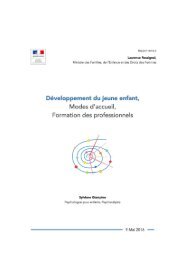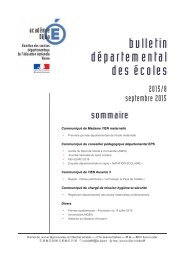agrl_innovations_in_ssa.pdf?utm_content=buffercb41d&utm_medium=social&utm_source=twitter
agrl_innovations_in_ssa.pdf?utm_content=buffercb41d&utm_medium=social&utm_source=twitter
agrl_innovations_in_ssa.pdf?utm_content=buffercb41d&utm_medium=social&utm_source=twitter
Create successful ePaper yourself
Turn your PDF publications into a flip-book with our unique Google optimized e-Paper software.
m<strong>in</strong>i dairies <strong>in</strong> the country sell<strong>in</strong>g pasteurised milk, ultra long life milk, yoghurts, ice cream,<br />
butter and ghee. Producers earn more from <strong>in</strong>formal than from formal markets (DDA, 2009).<br />
In February 2010 the <strong>in</strong>dustry launched the FAO Dairy Project with the purpose of updat<strong>in</strong>g<br />
the National Dairy Strategy as well capacity build<strong>in</strong>g among the stakeholder associations and<br />
unions (Dairy Uganda Forum, 2010)<br />
Emerg<strong>in</strong>g or unresolved challenges. Despite the success of Uganda’s dairy <strong>in</strong>dustry, several<br />
production and market<strong>in</strong>g challenges rema<strong>in</strong> (Wozemba and Nsanja, 2008). These <strong>in</strong>clude:<br />
• Inconsistent delivery of <strong>in</strong>puts and services, weak l<strong>in</strong>kages between farmers, processors<br />
and milk-collection centres, weak public–private dialogue and little <strong>in</strong>formation shar<strong>in</strong>g<br />
along the value cha<strong>in</strong>. There is a tendency for farmers to be <strong>in</strong>volved not only <strong>in</strong> primary<br />
production, but also <strong>in</strong> transport and process<strong>in</strong>g<br />
• Seasonal production fluctuations due to lack of feed especially dur<strong>in</strong>g dry spells. Farmers<br />
address this through use of locally available fodder such as banana peel, brewers’<br />
by-products and leaves of some common trees. Further research is however required to<br />
determ<strong>in</strong>e such fodder’s suitability and the actual balanced feed requirements<br />
• Market<strong>in</strong>g of surplus milk <strong>in</strong> high-potential areas <strong>in</strong> the West and <strong>in</strong>creas<strong>in</strong>g production<br />
<strong>in</strong> the Eastern and Northern areas of the country through improv<strong>in</strong>g genetic potential,<br />
improved feed<strong>in</strong>g, and rationalis<strong>in</strong>g the use of milk animals for draught work<br />
• Ensur<strong>in</strong>g that smallholder farmers can afford feed and veter<strong>in</strong>ary and AI services<br />
• Milk handl<strong>in</strong>g by producers, transporters and traders although low-cost and convenient<br />
often occurs <strong>in</strong> unsuitable plastic or metal conta<strong>in</strong>ers, adversely effect<strong>in</strong>g quality.<br />
Challenges <strong>in</strong>clude the high cost of milk cans, tankers, and coolers, lack of calibration for<br />
tankers used to transport milk to official channels, and rejection of milk on quality grounds<br />
by processors after delivery<br />
• With an estimated 80–90 percent of marketed milk be<strong>in</strong>g unprocessed through the<br />
<strong>in</strong>formal sector, issues of quality assurance rema<strong>in</strong>. As <strong>in</strong> Kenya producers and consumers<br />
often favour <strong>in</strong>formal markets. This provides opportunity for low-cost process<strong>in</strong>g and<br />
value addition through traditional dairy products.<br />
Lessons learned for scal<strong>in</strong>g up. A key lesson is the need for ongo<strong>in</strong>g discussions and coord<strong>in</strong>ation<br />
efforts by stakeholders along the value cha<strong>in</strong>. This <strong>in</strong>cludes smallholder farmers and traders,<br />
development agencies, and policymakers. Although the dairy <strong>in</strong>dustry and its support<strong>in</strong>g<br />
services were liberalised, there is a need to coord<strong>in</strong>ate bus<strong>in</strong>ess development services,<br />
<strong>in</strong>volv<strong>in</strong>g farmer organisations, while avoid<strong>in</strong>g direct subsidies that are known to stifle markets.<br />
The case studies: Eastern Africa 43






